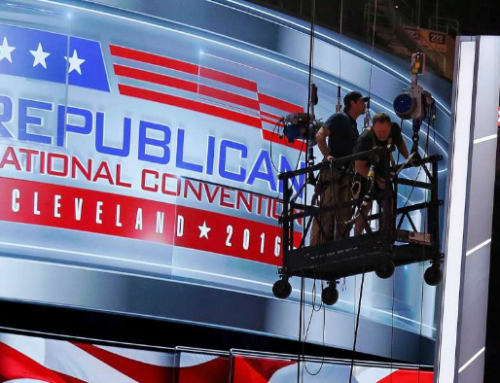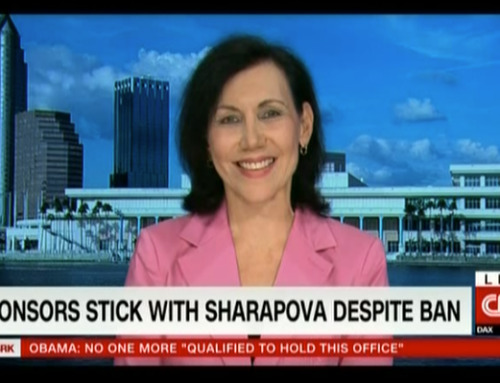What begins as a short fable as the brand emerged grew into a legend, one that is consistently told throughout the land by the brand ambassadors, understood by the market influencers, and embraced by loyalists.
I’ve always been a big fan of a good story. But not until I met Doug Stevenson, a storytelling guru, did I fully grasp its potent power in brand communications. Doug, a former actor and now storytelling coach, teaches professionals and corporations how to build and tell stories using his own story theater method. In 2000, I attended one of his programs in Seattle. While my agenda was on improving my speaking style through storytelling, I quickly saw the correlation to brand building. As I look at the world’s greatest brands, the brightest and most distinct, they are clearly masters of this craft.
The goal of a brand is to connect to the market with emotion and relevance. Make it an engaging, enjoyable experience; have a premise or a point; and be memorable. Applying storytelling principles to a brand development strategy simply makes the journey more efficient and effective.
Many brands have a great story — how they got started, what they do — but many fail to leverage their unique story in all touch point communications to the buying markets.
In selecting my top 10 brand storytellers, I considered the clarity of story, premise, characters, and the use of multiple communication channels. I also considered a wide range of industries, because businesses from all sectors, regardless of whether they’re B2C or B2B, have a story to tell.
The first five are high-profile brands with national or international markets, and big budgets. The second five are smaller organizations — and may be even more stellar because they achieved their storytelling greatness with limited resources.
Both groups of companies clearly get it. They set a stage, define the players, consistently recite the message, and deliver a happy ending with distinction and buyer benefit. I’ve encapsulated their stories as I hear them, see them, and have experienced them. Next month, I’ll examine their processes and best practices, and highlight trends that you can apply to your stories, producing more loyalty and equity in your brands.
Apple
From the beginning, Apple has been the story of a maverick company, led by the visionary Steve Jobs. Products have always pushed the cool factor and innovation, bucking the common PC masses. The hip Apple retail store environments further define the creative and renegade-like cultism. The introduction of iTunes and the iPod add the best chapter yet.
Southwest Airlines
More than 32 years ago, Rollin King and Herb Kelleher got together and decided to start a different kind of airline. They began with one simple notion: If you get your passengers to their destinations when they want to get there, on time, at the lowest possible fares, and make darn sure they have a good time doing it, people will fly your airline. The story is now a business legend.
This once small Texas airline has grown to become one of the largest airlines in America. The setting has always been casual, fun, and folksy. The employees are certainly a cast of characters, and the happy ending is one of high customer satisfaction and stakeholder profits (which is rare in this industry).
Aflac
The story of the persistent duck struggling to be heard has culminated into 90% brand recall among consumers since its debut. What started out as a way to generate name recognition, the duck has become the celebrity star behind the Aflac brand — as well as in a feature film. A voice crying out is something people relate to, especially in the insurance category.
Via television, print publications, radio promotions, philanthropic sponsorships, and product placements in film, Aflac uses various outlets to communicate its story of being there for its consumers when they need it most. The duck’s role will continue to be center stage.
Container Store
The Container Store is a story of simplifying and enhancing lives through organization and smart storage. The plot: No mess is too great for the power of niffy products and well-trained troops. This privately held company continues to grow and spread the good word of organizational Oz. The always-bright environments create a wonderland of answers for space challenges and time crunches.
Silversea Cruises
How does an ultra-luxury cruise line tell its story of opulent travel, exotic journeys, and supreme elegance? Through the lens of Fabrizio Ferri, acclaimed photographer of Vanity Fair and Vogue, and with internationally renowned actress, model, and author Isabella Rossellini as brand ambassador.
This story is not about a simple celebrity endorsement. Rossellini will collaborate with Ferri aboard Silversea ships and in exotic destinations to create a photographic journal of her travels, giving particular expression to the unique sensations and emotions associated with the line’s award-winning concept of ultra-luxury cruising.
ShoreBank
Since its inception in 1973, ShoreBank, a Chicago-based financial institution, has been a pioneer. In those days of officially sanctioned discrimination on the basis of race and income, ShoreBank was created to demonstrate that a regulated bank could be instrumental in revitalizing the communities being avoided by other financial institutions.
In 2000, ShoreBank expanded its focus to include environmental issues, believing that communities cannot achieve true prosperity without also attaining environmental well-being.
In addition to telling its story of compassion and community concern to the public, the $1.5 billion organization has created a total storytelling culture. Inspiring customer stories, photos, employee milestones, interesting characters, and positive outcomes are all highlighted using a variety of communication venues. In fact, they are chronicled in a searchable database.
Kimpton Group
“Every hotel tells a story,” is their tagline. This hotel and restaurant group is a connoisseur of great storytelling. Bill Kimpton, founder of the 40-property group, built the company’s brand on the philosophy that all travelers are insecure. “It’s just a matter of degree,” he says. “A hotel should relieve travelers of their insecurity and loneliness. It should make them feel warm and cozy.” Today the brand delivers that experience — indulging guests in a sensory journey.
The San Francisco-based company transforms historic downtown buildings into charming, European-style accommodations. Every detail adds to the adventure. Nothing is overlooked.
StartupNation
Meet the Sloan brothers, Jeff and Rich, two of the country’s top entrepreneurial experts and hosts of the nationally syndicated radio program, StartupNation. As successful inventors, venture capitalists, and business owners, they decided to form a company that helps other people start their own businesses. Because studies show that 67% of people want to start their own business, the StartupNation story is about achieving the ultimate dream — and living it every day.
Exhale
Imagine a destination spa to which one would travel thousands of miles to enjoy, nestled in the heart of – get this – a big bustling city. Sound like a fairy tale? It’s the story that Annbeth Eschbach tells as she delivers Exhale, a total life sanctuary encompassing relaxation, wellness, and fitness to enhance inner and outer well-being.
Exhale was launched April 15, 2003, and has quickly grown to four locations — two in New York, one in the Hamptons, and another in Boston. Several other locations in major urban markets will be announced soon.
Flying Pig Marathon
Sometimes the best stories have a twist — like a flying pig that leads one of the fastest-growing marathons in the U.S. The story celebrates Cincinnati’s history as “Porkopolis” in the 19th century and welcomed over 12,000 runners last year.
The brand story is used creatively in everything that touches the race from the 3-D medals to the pink volunteer race shirts and the “Swine Line” or starting line.
Honorable Mention: Haberman & Associates
Here’s a group of modern business storytellers. The company’s mission is to help organizations and individuals discover, develop, and deliver their stories. This Minneapolis-based company does a fine job of laying out the storytelling concept. Their Web site is well worth checking out.
Whether told orally or electronically, the ancient process of storytelling remains the same. It’s the passion, the creativity, and the integrity of the message that makes a story powerful. And powerful stories change the world.
This article first appeared in FastCompany.com. It the copyright of Karen Post and no part of this work can be published or reproduced in print without written consent from the author. The author can be contacted at kpost





